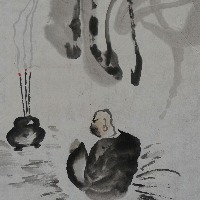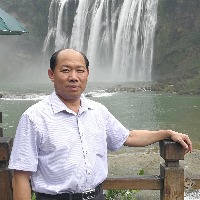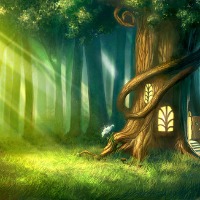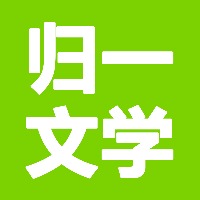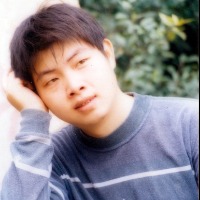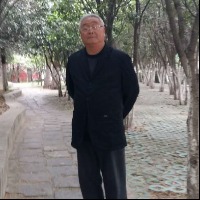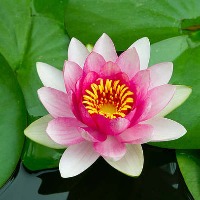Tokumori Makoto
Abstract: The Nihon shoki,or Chronicles of Japan,was originally compiled in 720 as the official history of the origin of Japan and the imperial family.Since then,up to and including modern times,numerous recurring lectures and interpretations of the narrative have established it as an authoritative text.This paper focuses on Ichijō Kaneyoshi’s fifteenth-century interpretation of the text,titled Nihon shoki sanso.He provided a valuable contribution to the conception of the first two volumes of the Nihon shoki (named“The Age of the Gods”) as self-sufficient world scripture through comparison with discourses of Buddhism,Confucianism,and other texts.Nevertheless,the retrospective approach to interpreting scripture adopted by the eighteenth-century scholar of the classics,Motoori Norinaga,constituted the mainstream approach to the Kojiki,another ancient narrative compiled in 712,as well as to the Nihon shoki.Kaneyoshi’s comparative reading of scripture remains unorthodox in studies of the Nihon shoki.
Keywords: Ichijō Kaneyoshi;interpretation;intertextuality;Kojiki;Nihon shoki;Nihon shoki sanso;Motoori Norinaga
1.Introduction
This paper deals with the history of interpretations of the early Japanese narrative theNihon shoki (《日本書紀》),or Chronicles of Japan.TheNihon shokiwas compiled and presented to the emperor in 720,originally as a history of the origin of Japan and the imperial family.The first two volumes describe the Age of the Gods: the creation of heaven and earth,the emergence of the gods,the descent of the Sun Goddess’s grandson,and the era of his two successors,who were descendants of a god.The following twenty-eight volumes of this book present the history of the subsequent reigns of the emperors who succeeded them until the end of the seventh century,the period just prior to the compilation of the work.Ever since the Nihon shokiwas compiled,for a long time,it has intermittently been the subject of lecture series and been given numerous interpretations to be an authoritative text,first within the imperial court,and later in temples and shrines as well.And after the text was published in woodblock printed editions and circulated widely in the mid-seventeenth century,private scholars came to play a major role in its interpretation.With these explications made in each historical period,theNihon shokihas been influential up to present.A notable example in modern times is found in theDainihon teikoku kenpō gige(《大日本帝国憲法義解》),orCommentaries on the Constitution of the Empire of Japan,edited by drafters of the Constitution in 1889.The drafters referred to the mythological narratives of theNihon shokiand another ancient text that was presented eight years prior,theKojiki (《古事記》),orAn Account of Ancient Matters,especially on the articles concerning the emperor as sovereign.Take for example Article 1 of Chapter 1,“The Emperor,”and a part of the commentary on it:第一条 大日本帝国ハ万世一系ノ天皇之ヲ統治ス(...)本條首メニ立国ノ大義ヲ掲ケ、我カ日本帝国ハ一系ノ皇統ト相依テ終始シ、古今永遠ニ亘リ、(...)統治ハ大位ニ居リ、大権ヲ統ヘテ国土及臣民ヲ治ムルナリ。古典ニ天祖ノ勅ヲ挙ケテ「瑞穂国是吾子孫可王之地、宜爾皇孫就而治焉」ト云ヘリ。又神祖ヲ称ヘタテマツリテ「始御国天皇」ト謂ヘリ。日本武尊ノ言ニ「吾者纏向ノ日代宮ニ坐テ大八島国知ロシメス大帯日子淤斯呂和気天皇ノ御子」トアリ(...)
[ARTICLE 1 The Empire of Japan shall be reigned over and governed by a line of Emperors unbroken for ages eternal.]
[At the outset,this Article states the great principle of the Constitution of the country,and declares that the Empire of Japan shall,to the end of time,identify itself with the Imperial dynasty unbroken in lineage,and that the principle has never changed in the past and will never change in the future,even to all eternity....By“reigned over and governed,”it is meant that the Emperor on His Throne combines in Himself the sovereignty of the State and the government of the country and of His subjects.An ancient record mentions a decree of the Heavenly Ancestor saying“The Country of Goodly Grain is a State,over which Our descendants shall become Sovereigns: You,Our descendant,go and govern it.”And the Divine Ancestor was also called“Emperor governing the country for the first time”(Hatsukuni-shirasu Sumera-mikoto).A Prince named Yamato-take-no-Mikoto said,“I am a son of the Emperor Otarashi-hiko-Oshiro-Wake,who resides in the palace of Hishiro at Makimuku,and who governs the Country of Eight Great Islands.”]To lay the foundation for the emperor’s sovereignty,the drafters of the Constitution referred to the mythical ordinance of the goddess of heaven (天祖Heavenly Ancestor),who compels her grandson to govern the country in the narrative of theNihon shoki.The name of the first emperor that follows (神祖;Divine Ancestor) is also cited from theNihon shokias proof of the observance of this decree.The prince’s words cited from theKojikiserve the same purpose.This is evidence that theNihon shokiperformed a politically vital function in modern Japan’s period of nation-state formation.And it shows that the recurring interpretations of theNihon shokiover roughly one thousand years have effectively elevated the early-eighth-century text to the level of scripture in modern times.One point to clarify here is that the present paper refers to the history of interpretations of theNihon shoki in a broader sense that includes interpretations of the Kojiki.After the two books were compiled in the early eighth century,while theNihon Shokihad been valued highly as the first of the official histories,theKojikihad long been considered the most valuable reference book for the study of theNihon shokiuntil MOTOORI Norinaga’s (本居宣長) voluminous commentary of theKojikiemerged at the end of the eighteenth century.As we will see later,we can consider that Norinaga also studied theKojikifrom the perspective of interpreting theNihon shoki——and in fact,his interpretations of theNihon shoki played an essential role in his annotation of theKojiki.These facts enable us to consider Norinaga’s commentary as a work that helps to shift the weight from theNihon shokito theKojikiwithin the long tradition of interpretations of theNihon shoki.Returning to the main topic,in order to establish how the narrative came to be considered as scripture,we can focus on ICHIJō Kaneyoshi’s (一条兼良) interpretation of theNihon shokiin the mid-fifteenth century.He took up the first two volumes of theNihon Shoki,named“The Age of the Gods”(神代),and produced a comprehensive interpretation of that whole narrative.His interpretation sheds light on the designation of the text as scripture in the long history of studies of theNihon shoki.Kaneyoshi was a high-ranking aristocrat who had held the position of regent twice in the imperial court during a turbulent age that preceded a period of political chaos,and he was also a distinguished scholar once called“a man of talent outstanding in five hundred years.”by his contemporary.He was familiar with Japanese classical literature,Chinese classics and Buddhism,and was said to have unparalleled knowledge of the practices and customs of the ancient imperial court.He gave lectures on theNihon shokiat the imperial court,and compiled a commentary of theNihon shokibased on these lectures titled Nihon shoki sanso(《日本書紀纂疏》);Collected Commentaries on theNihon shoki(hereafter cited asSanso) in 1457.
2.The Medieval Situation of the Nihon shoki
In order to understand the characteristics of Kaneyoshi’s interpretation,let us survey the understanding of the Nihon shokiin medieval Japan from the eleventh to early fifteenth centuries.There were several commentaries on the text prior to Kaneyoshi’s.One of them is a voluminous and important work calledShaku Nihongi(《釈日本紀》;Interpreting Nihongi),completed by URABE Kanekata in the late thirteenth century.“Nihongi”(日本紀) is an alternative name for theNihon shoki that prevailed in medieval times.Kanekata compiled the private records of lectures on theNihon shokiheld within the imperial court in the ninth and tenth centuries,and arranged them together with his and his father’s commentaries,which provided a valid basis for later studies and applications of theNihon shoki.However,Shaku Nihongi,as well as other commentaries,simply extract several words or phrases from the text,and provide commentaries to them.They have little intention of clarifying the relationships between each part and the whole,or the whole as a body made up of parts.This is what Kaneyoshi would go on to do.As far as the use of theNihon shokias a reference is concerned,it had always been considered the most authoritative source in the formation of new mythological discourses or commentaries on other classic texts,but it is actually rare that theNihon shokiwas directly referred to in these discourses.Most quotations from theNihongiwere actually not directly from theNihon shoki.This is partly because it was difficult for most of these writers to gain access to the text of theNihon shoki,but it may probably be due even more to the fact that they did not necessarily need the text as such,but only the foundation of its authority in order to create their new texts.Here,for example,is a paragraph from a commentary on the Chinese preface to the first official anthology of the early tenth century,Kokin wakashū(《古今和歌集》,A Collection of Japanese Poems Ancient and Modern) written by Buddhist priest Shōmyō (勝命) in the mid-thirteenth century:(上略)然而神世七代、時質人淳、情欲無分国常立尊 陽神
日本紀云、アメツチヒラクルハシメ、ウカヒタ丶ヨヘルナカニ、ヒトツノモノアリ、カタチアシカヒノコトクニシテ、神トナレリ、コレヲクニノトコタチノミコト丶マウス、神ノヨノハシメナリ、アシカヒハ、アシノツノクメルナルヘシ
[But in the Seven Generations of the Age of the Gods the times were unsophisticated and people were simple.The realm of emotions was not distinguished.]
【Commentary】Kuni-toko-tachi-no-mikoto,yang god Nihongi says,When heaven and earth began,there existed one thing in their floating about.It,in shape like a reed-shoot,became changed into a God.This is called Kuni-toko-tachi-no-mikoto.It is the beginning of the Age of the Gods.A reed-shoot is a reed sprouting forth.”Shōmyō states that this paragraph is quoted from theNihongibut this is actually not so.The description is similar to the account of the beginning of the Age of the Gods in theNihon shokibut different from it.It is cited from the editor’s explanatory notes onNihongi kyōen waka (《日本紀竟宴和歌》),Japanese poems at celebratory banquets,for the completion of lectures on theNihon shoki,which is supposed to have been edited by FUJIWARA Akisuke (藤原顕輔) in the twelfth century.By attributing the note to theNihongiand bringing it together with the other quotations (abbreviated here),Shōmyō creates a new Nihongi of his own,which could be disseminated and referred to as an authoritative account of the beginning of the Age of the Gods in the commentaries that followed.Returning to the topic of theNihon shokiin the medieval period,it should be added that even when part of the actualNihon shokiwas referred to,it was usually mixed with Buddhist and Chinese classical discourses to construct new texts,which are thus deeply connected with the religious movements in the same period.Under their hegemonic Buddhist discourses,the Buddhist priests tried not to suppress indigenous gods of Shintō (神道),but to subsume them as the manifestations of the Buddhist deities.On the other hand,the doctrines of Shintō creeds were formulated with a strong stimulus,mainly from Buddhist schools,and later a movement also developed to subsume Buddhist deities and discourses into an integral Shintō doctrine.Thus from either Buddhism or Shintō’s point of view,theNihon shoki’s narrative of the indigenous gods became the one to be supplemented by Buddhist discourses.Some examples will be taken below.
3.Kaneyoshi’s Attempt to Interpret the Nihon shoki
In this context,Ichijō Kaneyoshi arguably turned the Nihon shoki into a kind of world scripture,which he thought it should be.The features and significance of Kaneyoshi’s attempt to interpret theNihon shokiare classified into the following two points.Firstly,one of the features of his attempt is to grasp the significance of the narrative of the Age of the Gods as a whole.He did so by segmenting the text into sentences as units,giving headings to every unit and mentioning the multilayered relationships among the units in order to interpret the whole narrative as a multilayered and consistent composition.This method is not unique to Kaneyoshi.It is rather a common one used by Buddhist scholars to analyze the sutras.That Kaneyoshi applied this method to theNihon shokisuggests that he was trying to establish this ancient text as a kind of scripture,just like the sutras.It is his working hypothesis that theNihon shoki,at least the narrative of the Age of the Gods,is a consistent and complete text;theSansoitself is an attempt to demonstrate that this hypothesis is true.As mentioned above,such a claim had never been made in any preceding commentaries on theNihon shoki.With respect to the preceding analysis,it is also idiosyncratic that Kaneyoshi established the attitude of concentrating on the literary Chinese text of theNihon shokias such.That may sound strange,but most previous interpreters were prone to attributing less value to the text itself than to the supposed proto-narrative over or behind the text.This is an important problem with the Japanese scripture,one that is related to the status of writing.TheNihon shokiis written in literary Chinese.Nevertheless,it had been thought that the primary narrative had been given orally in Japanese and was later transcribed in literary Chinese.The project of inferring the proto-narrative in Japanese language from the present text in Chinese characters had thus been one of the main concerns in interpreting theNihon shoki.In theSansoKaneyoshi rejects this idea of a proto-oral text.It is true that he admits that expressions of theNihon shokiare clearly based on Japanese language.But he also points out that other expressions are reasonably taken as coming from Chinese originally.That means that the present text itself is the originalNihon shokias a whole.Thus Kaneyoshi never inquires about a proto-Nihon shokiin theSanso.He is the first to take this approach to theNihon shoki,an approach that is deeply connected to his thorough analysis of the composition of theNihon shokias a whole.Secondly,another outstanding feature of theSansois that Kaneyoshi tries to present correspondences between theNihon shokinarrative and Buddhist,Confucian and Taoist discourses.As mentioned earlier,there were many kinds of new syncretic Shintō and Buddhist discourses in Kaneyoshi’s period.And in other commentaries on the Nihon shoki,that narrative tended to be complemented with those discourses.We can say generally that Kaneyoshi’s attempt to relate passages and sentences of theNihon shokiwith the writings of the other religious or metaphysical teachings is another product of this syncretism.But,to be more exact,in this cultural climate Kaneyoshi actually excludes any syncretic understanding of theNihon shoki.Rather he tries to distinguish theNihon shokifrom the other discourses and show correspondences among them.Let us take one scene from the Nihon shoki as an example.This is a scene in which two gods begin to create the world:伊奘諾尊·伊奘冉尊、立於天浮橋之上、共計曰、底下豈無国歟、廼以天之瓊矛、指下而探之。是獲滄溟。其矛鋒滴瀝之潮、凝成一嶋。名之曰磤●馭慮嶋。[Izanagi no Mikoto and Izanami no Mikoto stood on the floating bridge of Heaven,and held counsel together,saying:“Is there not a country beneath?”Thereupon they thrust down the jewel-spear of Heaven,and groping about therewith found the ocean.The brine which dripped from the point of the spear coagulated and became an island which received the name of Ono-goro-jima.]
One Buddhist scholar of the early fifteenth century provided a commentary on the word滄溟(the ocean),as follows:
滄溟者、大海之惣名也。当初伊奘諾尊、滄溟ヲミクタシ給ニ、大日如来ノ印文アリ。天ノサカホコヲ指下サクリ給フニ、前ニサワル物更ニ無シ。其ノホコヲ引上給ニ、其ホコノ滴リ一ノ嶋ト成レリ。ヲノコロ嶋ト云也。
[滄溟 is the general name of the ocean.In the beginning,when Izanagi no Mikoto looked down at the ocean,in it he found a sign of The Great Sun Buddha (大日如来).Therefore,he thrust down the spear of Heaven and groped about,but there was nothing to touch.Thereupon,when he drew up the spear,a drop from the spear became one island.We call it Ono-goro-jima.]Properly speaking,this is not a commentary.Instead it provides a new syncretic description by adding the image of The Great Sun Buddha,which never appears in theNihon shoki.Taking one more example,an essay supposed to have been written in the late fifteenth century says:伊奘諾、伊奘冉二尊、天御中主尊ノ宣命ヲ受テ、天ノ浮橋ノ上ニ竚ンデ共ニ計テ曰、豈此下ニ国土無カランヤトテ、天瓊矛ヲ指下探リ給ニ、滄溟ヲ獲タリ。又海底ニ大日ノ印文在テ光ヲ放ス。矛ノ滴彼印文ノ光ト和合テ一ノ嶋ト成ル。大日ノ本国ナル故、大日本国ト号ス。
[Izanagi and Izanami,two gods,obeyed Ame-no-Minaka-nushi’s order and stood on the floating bridge of Heaven,and held counsel together,saying:“Is there not a country beneath?”Thereupon they thrust down the jewel-spear of Heaven,and groping about therewith found the ocean.And at that bottom there was a sign of the Great Sun [Buddha] shining.The drop from the point of the spear was mixed with the light of that sign and became an island.This is the main land (本国) of The Great Sun (大日).Therefore we call it Dai-Nihon-koku (大日本国).]This story is almost the same as theNihon shoki,but here too the image of the Great Sun Buddha is added.In this case,the discourse connected with that image even covers the origin of the name of Japan.Now we can contextualize Ichijō Kaneyoshi’s interpretation in this trend of syncretism.Kaneyoshi also introduces Buddhist discourses to his commentaries on theNihon shoki.Nevertheless,his way of introducing them in theSansois different from these two texts.
 In Kaneyoshi’s interpretation,Buddhist discourses also play an important role: he relates the spear of the gods of heaven with an esoteric Buddhist indestructible mallet,and he finds parallels between the creation of Ono-goro-jima from the brine and part of the Buddhist cosmological process.Kaneyoshi also refers to Chinese yin-yang theory in his commentaries.On the other hand,it is also clear that he ignores the common syncretic narrative of the sign of the Great Sun Buddha.He therefore refuses that syncretic trend of the period.He does not integrate theNihon shokiwith Buddhist discourses and Chinese classic ones,but he points out the correspondences among them.Why does he do so against the syncretic current? Let us ascertain a decisive reason for this.In theSanso,to answer how Shintoists can know about the Age of Gods when there was no letter to record,he answers in the following manner:上古無文字、然結縄刻木、且為之約、吾邦開闢之事、幽明之迹、自古神聖相授、或託人宣言、而其所説、自莫不符合三教之理
In Kaneyoshi’s interpretation,Buddhist discourses also play an important role: he relates the spear of the gods of heaven with an esoteric Buddhist indestructible mallet,and he finds parallels between the creation of Ono-goro-jima from the brine and part of the Buddhist cosmological process.Kaneyoshi also refers to Chinese yin-yang theory in his commentaries.On the other hand,it is also clear that he ignores the common syncretic narrative of the sign of the Great Sun Buddha.He therefore refuses that syncretic trend of the period.He does not integrate theNihon shokiwith Buddhist discourses and Chinese classic ones,but he points out the correspondences among them.Why does he do so against the syncretic current? Let us ascertain a decisive reason for this.In theSanso,to answer how Shintoists can know about the Age of Gods when there was no letter to record,he answers in the following manner:上古無文字、然結縄刻木、且為之約、吾邦開闢之事、幽明之迹、自古神聖相授、或託人宣言、而其所説、自莫不符合三教之理[In ancient times there were no letters.Therefore by knotting rope and carving in wood we made promises.Matters about the beginning of our country and evidence of people and gods were handed down from sage to sage since ancient times,or entrusted to people for making a declaration.Therefore these statements have no disagreement in principle with any discourses of three teachings (Confucianism,Taoism and Buddhism).]Kaneyoshi talks about how to establish the credibility of the writings about the Age of Gods.He mentions that oral transmission has the potential for narrating antiquity.Nevertheless,in his opinion,we cannot find any text that has a factual relationship with the reality of the prehistoric age.Therefore he insists that what is important for credibility of the text is the concordance in principle (理) between theNihon shokiand the discourses of the three teachings about the same prehistoric age.According to Kaneyoshi,in that sense,it is concordance among them that actually provides theNihon shokiwith its credibility as a text about the Age of Gods.As we have seen,he did not necessarily seek literal overlaps among those discourses,but rather,as he specifically wrote,he sought for concordance in principle,or structural equivalences among them.For example,regarding the relationship with Buddhist cosmological discourses,Kaneyoshi refers to at least six Buddhist descriptions of the creation stage of the universe in commentaries on particular passages of theNihon shoki.It is true that it is not so easy to accept each concordance in those relations,but the series of those correspondences between them provides a sense of structural equivalence,which is arguably what Kaneyoshi wanted to show the reader.That Kaneyoshi’s interpretation is so full of remarks on those equivalences is itself clearly a verification of his hypothesis about the credibility of theNihon shoki.Through these analyses Kaneyoshi tried to demonstrate that theShokias a text is a comprehensive world scripture.To make this clear,let us compare his attempt with that of KITABATAKE Chikafusa (北畠親房).Chikafusa was also an aristocrat close to the emperor and wrote theJinnō-Shōtōki(《神皇正統記》;A Chronicle of Gods and Sovereigns),a book about the origin and succession of the imperial family and the political legitimacy of the emperor more than one hundred years before theSansoappeared.In this work,he states:同世界ノ中ナレバ、天地開闢ノ初ハイヅクモカハルベキナラネド、三国ノ説各コトナリ。
[Although the creation of heaven and earth,having occurred within the same universe [同世界],must have been the same everywhere,there are nonetheless differences in the traditional accounts of creation in three countries [India,China,and Japan]].Chikafusa already had a deep understanding of not only theNihon shoki’s narrative but also the Buddhist and Confucian cosmological discourses.However,unlike Kaneyoshi,Chikafusa admits that there are differences among them.Moreover,the above remark also shows that his acceptance of difference is supported by his conviction of the reality of“the same universe ”(同世界),though this concept of the universe (世界) itself is Buddhist one.In this book,Chikafusa does not provide a commentary on theNihon shoki.Rather,he edits and modifies theNihon shoki,sometimes by supplementing it with other texts in order to make new narrative.His main purpose was to clarify the unparalleled principle of direct succession to the throne from the god of heaven in Japan.His conviction of the agreement of the real world with his faith in that principle enabled him to make use of differing discourses as sources.Compared with Chikafusa,Kaneyoshi did the opposite in hisSanso.He had noa prioriconviction of the reality of the world shared with people of the other countries.Instead he had faith in theNihon shokias scripture.Through his comparative analyses,he tried to prove that his faith was true,and he wanted to be convinced of the reality of the same world with the support of his own world scripture.
4.After Kaneyoshi
To clarify the historical significance of Kaneyoshi’s work,let us review the development of interpretations of theNihon shokiafter his attempt.Kaneyoshi’s interpretation had a direct influence on subsequent Shintō scholars including YOSHIDA Kanetomo (吉田兼倶) and his son,the Confucian scholar KIYOHARA Nobukata (清原宣賢).Kanetomo formulated the religious dogmas and institutions of Shintō,which gave a solid foundation to various Shintō schools that followed.He also studied Kaneyoshi’s interpretations in theSansothoroughly to make his own interpretation of theNihon shoki.Nobukata compiled comprehensive commentaries on theNihon shokibased on Kaneyoshi’s interpretations as well as his father’s.Kanetomo and Nobukata gave lectures on theNihon shoki energetically,not only in the imperial court,but also in temples,and Nobukata even gave lectures to local warlords at the beginning of the warlike age in the early sixteenth century.When Kanetomo and Nobukata’s commentaries on theNihon shokiwere prepared for publication in 1664,theSansowas included with them in the same book.Thereafter,theSanso,solely or together with Kanetomo and Nobukata’s commentaries,became widely read in the early modern Japan.Nevertheless,we need to pay attention to the fact that those who followed restored the idea of a proto-Nihon shokiwritten in Japanese.Kaneyoshi had dismissed that idea because he could not have faith in anything but the actualNihon shokifor his reasoning,and he knew that the actual text was established within the knowledge of the Chinese classics shared in East Asia.But presumably after subsequent scholars accepted the universal perspective and the idea of theNihon shokias world scripture that Kaneyoshi provided,the actualNihon shokiin literary Chinese came to look like a simulacrum of their own scripture to them.They had faith in the imagined existence of a proto-Nihon shokiand the original Japanese words which are supposed to compose that text.A representative figure of this tendency is Motoori Norinaga mentioned above,an outstanding scholar of classics in the eighteenth century.He states the following:抑意と事と言とは、みな相称へる物にして、上代は、意も事も言も上代、(中略)書紀は、後代の意をもて、上代の事を記し、漢国の言を以て、皇国の意を記されたる故に、あひかなはざわること多かるを、此記は、いさゝかもさかしらを加へずて、古より云伝たるまゝに記さたれば、その意も事も言も相称て、皆上代の実なり、是もはら古の語言を主としたるが故ぞかし[Spirit,event and word are all things which are consistent with one another.In the world of the ancients,there were the spirit,events,and words of the ancients....In theNihon shokithe events of the ancients are recorded with the spirit of the later ages and the spirit of our imperial country is recorded by the language of China.Therefore there are many things which are not in correspondence with one another.TheKojikicontains not a bit of posturing,and since it has recorded things just as they have been transmitted from ancient times,in theKojikispirit,event and word are in accord with one another,and what is represented there is the true nature of the ancient age.This is precisely because they have concentrated on using only the language of ancient times.]Like Kaneyoshi,Norinaga eagerly pursues world scripture and,as this statement shows,he agrees with Kaneyoshi that the actualNihon shokiis the product of the shared culture of literary Chinese in East Asia.But for precisely this reason,theNihon shokiis no longer a primary scripture and is inconsistent in many ways for Norinaga.He admires theKojiki,which preserves Japanese words of ancient times.This does not mean that he repudiates the previous studies of theNihon shokifrom medieval times;rather,his statement about theKojikialso shows that the image of the proto-Nihon shokifunctions in Norinaga’s perspective.The higher priority he places on theKojikican be considered a reflection of his view of it as an embodiment of the proto-Nihon shoki.As for the credibility of the text,while Kaneyoshi sought for the intertextual relationships among literary Chinese discourses,Norinaga foregrounds his faith in the transparent relationship between ancient words and the reality of antiquity.This faith led him to thorough interpretations of theKojikiand theNihon shokibased on linguistic and philological analysis,which have established a lasting influence on the studies of them up to present.However,while Norinaga’s retrospective approach to the texts can demonstrate originality of scripture,we must not overlook the fact that it cannot demonstrate the universality that should be inherent in world scripture.This implies that,contrary to his self-consciousness,Norinaga’s research on theKojikias world scripture was founded only on the corroboration that Kaneyoshi reached through his intertextual explication of theNihon shoki.5.Conclusion
The retrospective manner of interpreting scripture represented by Norinaga is the mainstream approach to understanding theKojikiandNihon shoki.Returning to the 1889Commentaries on the Constitution of the Empire of Japan,we not only see a modern regeneration of theNihon shoki,but also hear an echo of the manner of interpretation practiced by Norinaga.To confirm the legitimacy of the emperor’s sovereignty,the commentators exclusively looked back to ancient words demonstrating his indigenous origin,which is clearly similar to Norinaga’s pursuit of ancient words conveying the reality of antiquity.Both sought originality,not universality.On the other hand,Kaneyoshi’s approach to theNihon shokiis obviously different.In the case of his commentary on the description of the descent of the Sun Goddess’s grandson by her command in theNihon shoki,cited as the first example in the 1889Commentaries,Kaneyoshi tries to demonstrate the meaning of the three treasures that the Sun Goddess gave to her grandson by Confucian and Buddhist concepts,and explains the significance of the grandson’s descent,with those treasures from the Buddhist perspective.Moreover,concerning the textual fact in theNihon shokithat after the death of the eldest son,the Goddess selected not the eldest son’s son,but a son born out of wedlock as the descending god,Kaneyoshi takes as precedent the examples of ancient China: Taiwang (太王) selected not his eldest son Taibo (太伯) but Jili (季歴) as a successor,and Wenwang (文王) selected not Boyikao (伯邑考) but Wuwang (武王) in the Zhou (周) dynasty.These commentaries characteristically show that Kaneyoshi aims to validate the specific text from the perspective of universal values that are shared throughout the world.Kaneyoshi’s approach to theNihon shokimight not have succeeded after Norinaga’s work emerged.In modern scholarship,theSansohas been considered to be full of forced analogies with discourses of Buddhism,Confucianism,and other texts,based on medieval fallacy.Studies of theNihon Shokihave thus accorded it insufficient attention.Our perception of these medieval discourses is now drastically changing as a result of advances in studies of medieval Japan,as well as the recent appearances of several important studies on theSanso.But the significance of the medieval commentary on the history of interpretation of theNihon shokihas not been clearly understood.In that long history,Kaneyoshi provided a valuable contribution to the conception of theNihon shokias self-sufficient world scripture through his comparative analyses,and his attempt in theSansoremains an alternative reading of theNihon shoki.Bibliography参考文献Aston,W.G.,trans.Nihongi,Chronicles of Japan from the Earliest Times to A.D.697.Tokyo: Charles E.Tuttle,1972.Felt,Matthieu A.J.“Rewriting the Past: Reception and Commentary of Nihon shoki,Japan’s First Official History.”PhD diss.,Columbia University,2017.ProQuest (1896955647).Norinaga,Motoori.Kojiki-den,Book 1.Translated by Ann Wehmeyer.Ithaca: Cornell University East Program,1997.Rodd,Laurel Rasplica,and Mary Catherine Henkenius,trans.Kokinshū A Collection of Poems Ancient and Modern.Princeton: Princeton University Press,1984.Scheid,Bernhard.“Two modes of secrecy in theNihon shokitransmission.”InThe Culture of Secrecy in Japanese Religion.Edited by Bernhard Scheid and Mark Teeuwen.London: Routledge,2006.Varley,H.Paul,trans.A Chronicle of Gods and Sovereigns: Jinnō shōtōki of Kitabatake Chikafusa.New York: Columbia University Press,1980.Yasumaro,ō no.The Kojiki: An Account of Ancient Matters.Translated by Gustav Heldt.New York: Columbia University Press,2014.市古貞次:《塵荊鈔(下)》,《古典文庫》,東京:古典文庫,1984年。[ICHIKO,Teiji.Jinkeishō (Dustlike and Rasping Excerpts).Vol.2.In Koten bunko(Classical Library).Tokyo: Koten bunko,1984.]稲田正次:《明治憲法成立史》下巻,東京:有斐閣,1962年。[INADA,Shōji.Meiji kenpō seiritsushi(History of Establishment of Meiji Constitution).Vol.2.Tokyo: Yūhikaku,1962.]伊藤聡:《神道とは何か:神と仏の思想史》,東京:中央公論社,2012年。[ITō,Satoshi.Shintō towa nanika: Kami to hotoke no nihonshi(What is Shintō: Intellectual History of Gods and Buddha).Tokyo: Chūō kōronsha,2012.]金沢英之:《神話と歴史》,《岩波講座:日本の思想》第6巻,東京:岩波書店,2013年。[KANAZAWA,Hideyuki.“Shinwa to rekishi”(Myth and History).InIwanami kōza nihon no shisō (Iwanami Course on Japanese Thought).Vol 6.Tokyo: Iwanami shoten,2013.]北畠親房:《神皇正統記》,岩佐正等校注:《神皇正統記 増鏡》,《日本古典文学大系》,東京:岩波書店,1965年。[KITABATAKE,Chikafusa.Jinnō shōtō ki (Chronicles of the Authentic Lineages of the Divine Emperors).InNihon koten bungaku taikei (An Anthology of Japanese Classical Literature).Edited by Iwasa Tadashi et al.Tokyo: Iwanami shoten,1965.]神野志隆光:《古事記と日本書紀:「天皇神話」の歴史》,東京:講談社,1999年。[KOHNOSHI,Takamitsu.Kojiki to Nihon shoki: shinwa no rekishi(Kojiki ※ROMAN Nihon shoki: History of Myth of Tennō).Tokyo: Kodansha,1999.]——:《平安期における日本紀―勝命古今序注をめぐって》,《日本文学》1998年,第45—47頁。[——.“Heianki ni okeru Nihongi: Shōmyō Kokin jochū o megutte”(Nihongi in Heian period: Concerning ShōmyōKokin jochū).Nihon bungaku(1998): 45-47.]宮川葉子:《一条兼良の『日本書紀纂疏』成立前後:成仁親王元服との関連を中心に》,《ぐんしょ》44,1999年。[MIYAGAWA,Yōko.“Ichijō Kaneyoshi no Nihon shoki sanso seiritsu zengo: Fusahito shinnō genpuku tono kanren wo chūshin ni”(Before and After Appearance ofNihon shoki sanso: Centering on the Relation to a Ceremony to Mark Prince Fusahito’s Coming-of-Age).InGunsho,vol.44,1999.]本居宣長:《古事記伝》,《本居宣長全集》第9巻,東京:筑摩書房,1968年。[MOTOORI,Norinaga.Kojiki den (A Commentary on the Kojiki).InMotoori Norinaga zenshū (Complete Works of Motoori Norinaga).Vol.9.Tokyo: Chikuma shobō,1968.]永島福太郎:《一条兼良》,東京:吉川弘文館,新装版,1988年。[NAGASHIMA,Fukutarō.Ichijō Kaneyoshi.New Edition.Tokyo: Yoshikawa kōbunkan,1988.]《日本書紀纂疏·日本書紀抄》,《天理図書館善本叢書》,東京:八木書店,1977年。[Nihon shoki sanso/Nihon shoki shō(Collected Commentaries on theNihon Shoki /Notes for Lectures on the Nihon Shoki).InTenri toshokan zenpon sōsho(Rare Book Collection in Tenri Library).Tokyo: Yagi shoten,1977.]西宮一民:《日本上代の文章と表記》,東京:風間書房,1970年。[NISHIMIYA,Kazutami.Nihon jōdai no bunshō to hyōki(Composition and Writing in Early Japan).Tokyo: Kazama Shobō,1970.]二藤京:《『日本書紀纂疏』の「三種神器」論》,《国語と国文学》2007年3月号。[NITō,Miyako.“Nihon shoki sanso no sanshu no jingi ron”(Theory of Three Treasures inNihon shoki sanso).Kokugo to Kokubungaku3 (2007).]坂本太郎等校注:《日本書紀(上)》,《日本古典文学大系》,東京:岩波書店,1967年。[SAKAMOTO,Tarō et al.,eds.Nihon shoki (The Chronicles of Japan).Vol.1.InNihon koten bungaku taikei (An Anthology of Japanese Classical Literature).Tokyo: Iwanami shoten,1967,81.]勝命:《古今和歌集序注》,小島憲之、新井栄蔵校注:《古今和歌集》,《新日本古典文学大系》,東京:岩波書店,1989年。[Shōmyō.“Kokin wakashū jochū”(Commentaries on Chinese Preface toA Collection of Japanese Poems Ancient and Modern).InKokin wakashū.Collated and annotated by Kojima Noriyuki and Arai Eizō.In Shin nihon koten bungaku taikei(New Anthology of Japanese Classical Literature).Tokyo: Iwanami Shoten,1989.]春瑜:《日本書紀私見聞》,《神宮叢書影印叢刊》之《古事記·日本書紀(下)》,東京:八木書店,1982年。[Shunyu.Nihon shoki shikenbun (My Personal Observation on theNihon shoki).InJingū sōsho eiin sōkan: Kojiki,Nihon shoki.Vol.2.Tokyo: Yagi shoten,1982.]徳盛誠:《清原宣賢『日本書紀抄』試論:『日本書紀纂疏』との連関から》,新川登亀男,早川万年編,《史料としての『日本書紀』―津田左右吉を読み直す》,東京:勉誠出版,2011年。[TOKUMORI,Makoto,“Kiyohara Nobukata Nihon shoki shō shiron: Nihon shoki sanso tono kanren kara”(An Essay on Kiyohara Nobukata’sNihon shoki shō: Concerning Its Relationship withNihon shoki sanso),inShiryo toshite no Nihon shoki: Tsuda Sōkichi wo yominaosu(Nihon shokias a Historical Material: Rereading Tsuda Sōkichi’s Works).Edited by Shinkawa Tokio and Hayakawa Mannen.Tokyo: Bensei Shuppan,2011.]義江彰夫:《神仏習合》,東京:岩波書店,1996年。[YOSHIE,Akio.Shinbutsu shūgō(Syncretic Fusion of Shintoism and Buddhism).Tokyo: Iwanami shoten,1996.]





